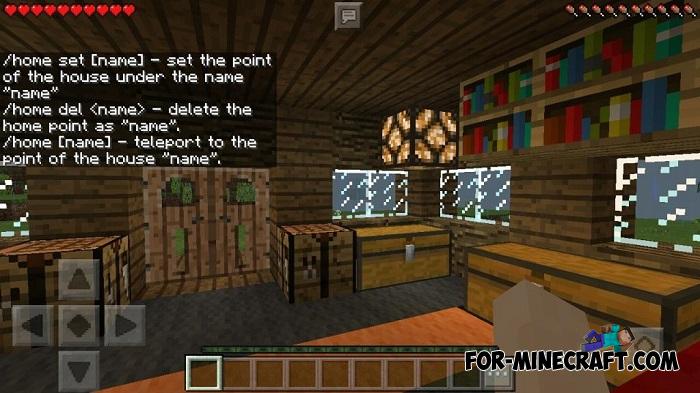Minecraft is a role-playing video game inspired by Legos in which you may construct and build your own universe. The game’s initial focus was on your avatar building blocks to defend oneself against vermin, but it was soon broadened to include a variety of diverse themes.
This has evolved into a timeless classic with a number of unique features throughout time. When you’re in Creative mode, you have an infinite quantity of resources at your disposal, allowing you to build whatever you want. In Survival mode, you’ll be able to travel to new worlds and explore new planets.
You may build a stronghold or store weaponry to prepare for a monster attack.
Minecraft players, rejoice! We’ve produced a list of 15 amazing games like Minecraft for you that are popular among elementary school children.
As the game progressed, more content was introduced on a regular basis. Minecraft users may personalize and change the game in a variety of ways.
This game is playable on a variety of platforms and devices. The PlayStation 3, Wii, Xbox 360, PC, smartphone, iPad, and Raspberry Pi are among the most popular gaming devices.
In Minecraft, you may interact with and even influence the Terabyte cosmos. The list of ecological phenomena that follows is far from exhaustive. Today, we are going to discuss about How to set home in Minecraft. So, Let’s get started.
How to set home in Minecraft

A basic houses plugin that allows you to build, remove, and teleport to a variety of different homes. Have the capacity to control a blacklist of worlds where players will be barred from establishing a home. The configuration allows you to modify settings such as the maximum number of houses, teleport cooldown, teleport latency, and the messages that are presented to the user.
To use “MAX HOMES,” you must fulfill one of the soft prerequisites listed below, as well as set up groups for the corresponding permissions plugin. You will then need to configure max-homes in the config.yml file. Below the default configuration is an example max-homes configuration.
/sethome [HomeName] [HomeDescription] – This command allows the issuer to create a house with a supplied name and description at your current location. If no name or description is provided, you will be assigned a default house in your current location.
/home [HomeName] – This command transports the user to the specified “HomeName.” If no home name is specified, the user is transported to their default home, as determined by /sethome.
/delhome [HomeName] – This command deletes the home with the specified name. If no house name is specified, the default home will be removed.
/delete-[PlayerName]-home [HomeName] – Players having the “homes.delhome-of” permission can use this command to remove any player’s established home. If no home name is specified, the default home will be assumed to be the house to be deleted.
/uhome /uhomeHomeName> /uhomeHomeDescription> – Players having the “homes.uhome” permission can use this command to update any of their previously established homes. If no description is provided and one was previously specified, the old one will be used.
/uhome-of /uhome-of /uhome-of /uhome- This command allows players with the “homes.uhome-of” permission to update any player’s home. If no home name is specified, it will use the default home of the player.
/homes [PlayerName] – This command will list all of the players who have presently set residences, if any exist. Players that have the “home.gethomes” permission can use the additional PlayerName parameter to list a specific player’s houses.
[Add/Remove] /blacklist [WorldName] – Use this command to add and delete planets from the blacklist. If no additional inputs are given, it will display all planets that are presently banned.
Install a permissions plugin, such as LuckPerms or Vault & a Vault compatible permissions plugin, and then grant the permission “houses.sethome” to the (player or group) for whom you want to enable the use of numerous homes.
This is a volunteer computing initiative that allows anybody on the internet to contribute resources to Minecraft-related academic projects.
[email protected] permits the study of Minecraft’s fundamental rules in order to solve outstanding issues about the game’s features and genuine boundaries.
Some of them are crucial to the significantly more challenging future of Minecraft seedfinding, but also provide us hope for fantastic new worlds with the vastly diverse and wider world creation that it delivers.
These modifications were indicated by the extension of the seed-space (the number of distinct seeds that exist) from 44 bits (48-4 bits) to 60 bits (64 full bits, minus 4 again). Simply put, we now have 65,536 times more work to perform to discover a single ‘lost’ seed. That’s hundreds of times more choices than existed previously.
Minecraft seed finding may become more slower as of 1.18, requiring more computers, time, and code until new methods are discovered. Along the road, we may have additional CUDA and OpenCL (long-term) projects.
That’s all for today’s article on How to set home in Minecraft. Do check out all the sections and know you should know which games are best for dancing. Till then, stay safe and follow us for more upcoming gaming coverage.
Follow us on Twitter & like our Facebook page for more post-updates

Jatin is an aspiring dentist with a keen interest in video games who likes to spend his time playing an array of different games. Other than that, he is a die-hard basketball fan who often embraces R&B music.